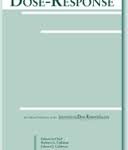Andrea Dei
Hormesis and Homeopathy: Toward a New Self-Consciousness
Dose Resp, 2017, 15 (4), 1-4

Contrary to common belief, most new discoveries and theories are not merely additions to the existing stockpile of scientific knowledge; in order to assimilate them, the scientist usually has to rearrange his intellectual mind, discarding elements of his own previous theories. In this sense, he plays the role of a divergent thinker since the scientific community is often not ready to accept a new position for many reasons, among which not only lack of flexibility and open-mindedness but also political and economic interests. The gist of this thought1 by Thomas Kuhn can be found in an important editorial by Edward Calabrese which recently appeared in Homeopathy.2 The editorial concerns a manuscript published by Bellare and coworkers in the same issue of the journal,3 in which the authors show that nanoparticles of different metals, that in previous articles had been unequivocally found at concentrations of a certain pg/mL in 30 CH and 200 CH homeopathic remedies,4,5 induced a biological response. Furthermore, the authors reveal that the biological responses induced by these homeopathic remedies show the traits that would normally characterize a hormetic dose–response mechanism.6–11 Taking into account that both homeopathy and hormesis, as well as their mutual relationships, are attractors of criticism and controversy,12–19 this result, in Calabrese’s opinion, is extremely significant. Using Calabrese’s words, it shows once again what happens when some scientists actually try to understand the physical system and what happens within it, while others are simply dismissive. In this context, there are a few more points I want to mention here that deserve particular consideration.







Lascia un commento
Devi essere connesso per inviare un commento.